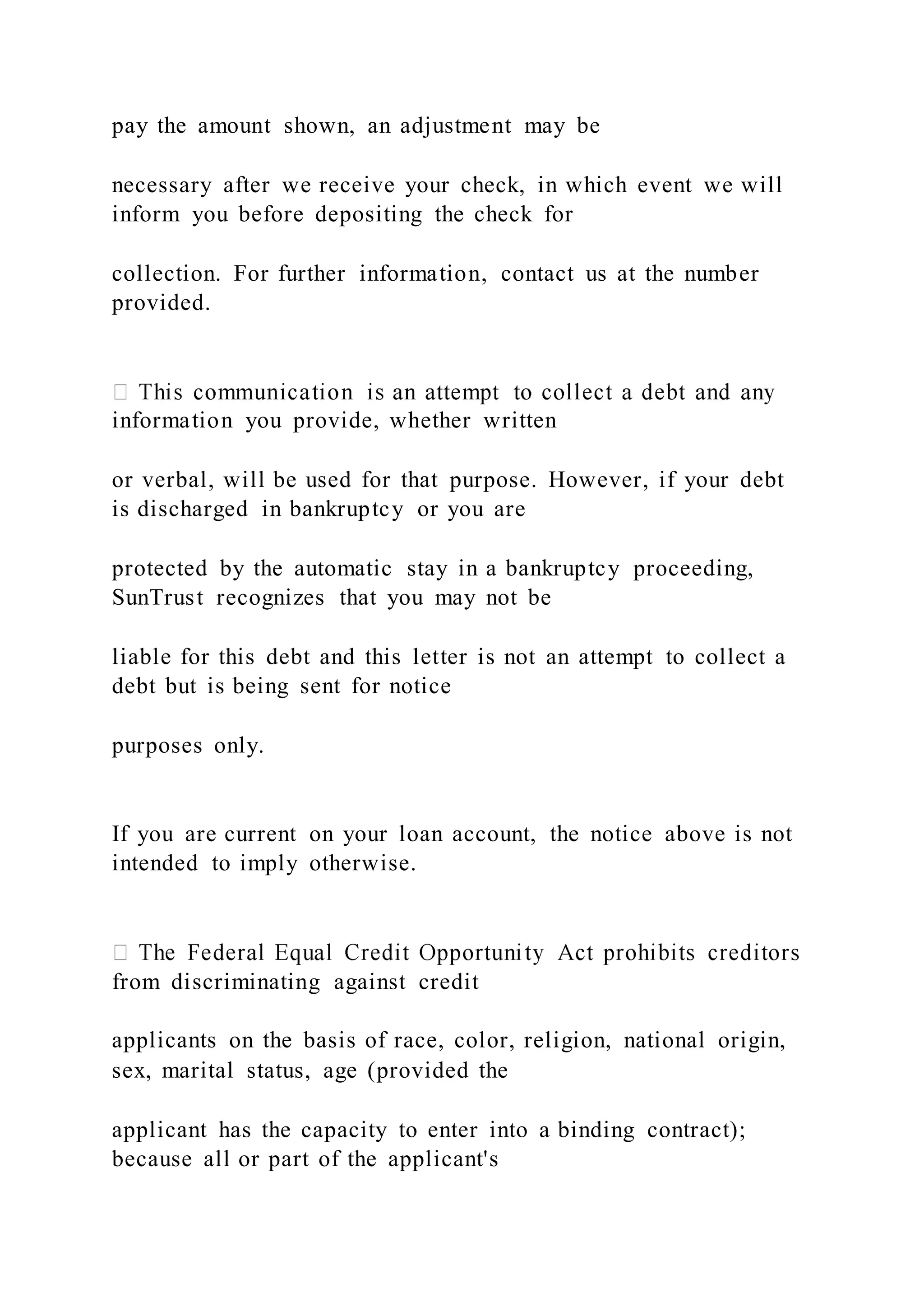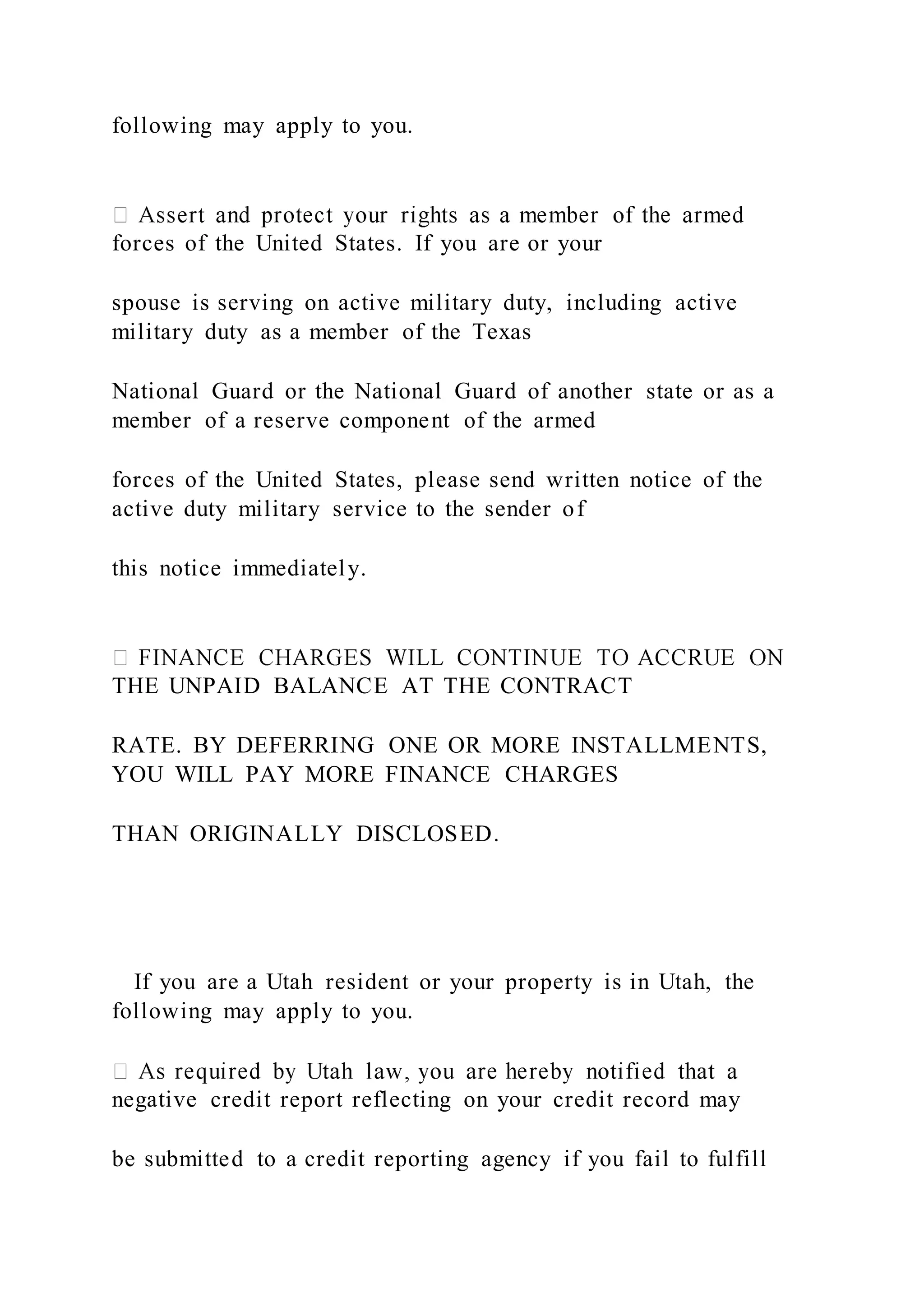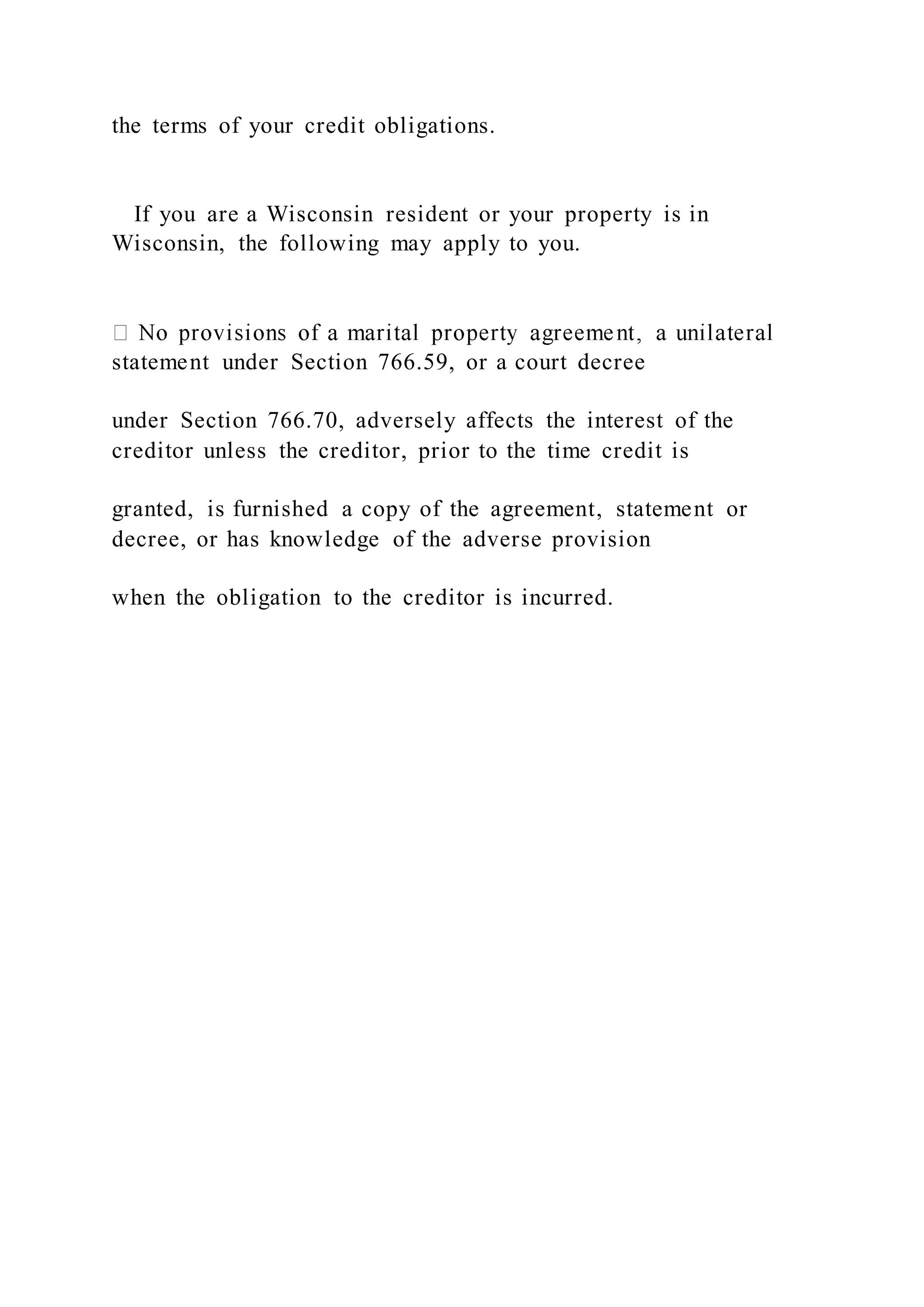This document serves as a student guide for a course on statistical analysis using IBM SPSS Statistics, covering various statistical techniques and their applications. It includes lessons on data distributions, inferential statistics, hypothesis testing, and regression analysis, along with practical activities to reinforce learning. The guide is proprietary to IBM and includes restrictions on reproduction and distribution.

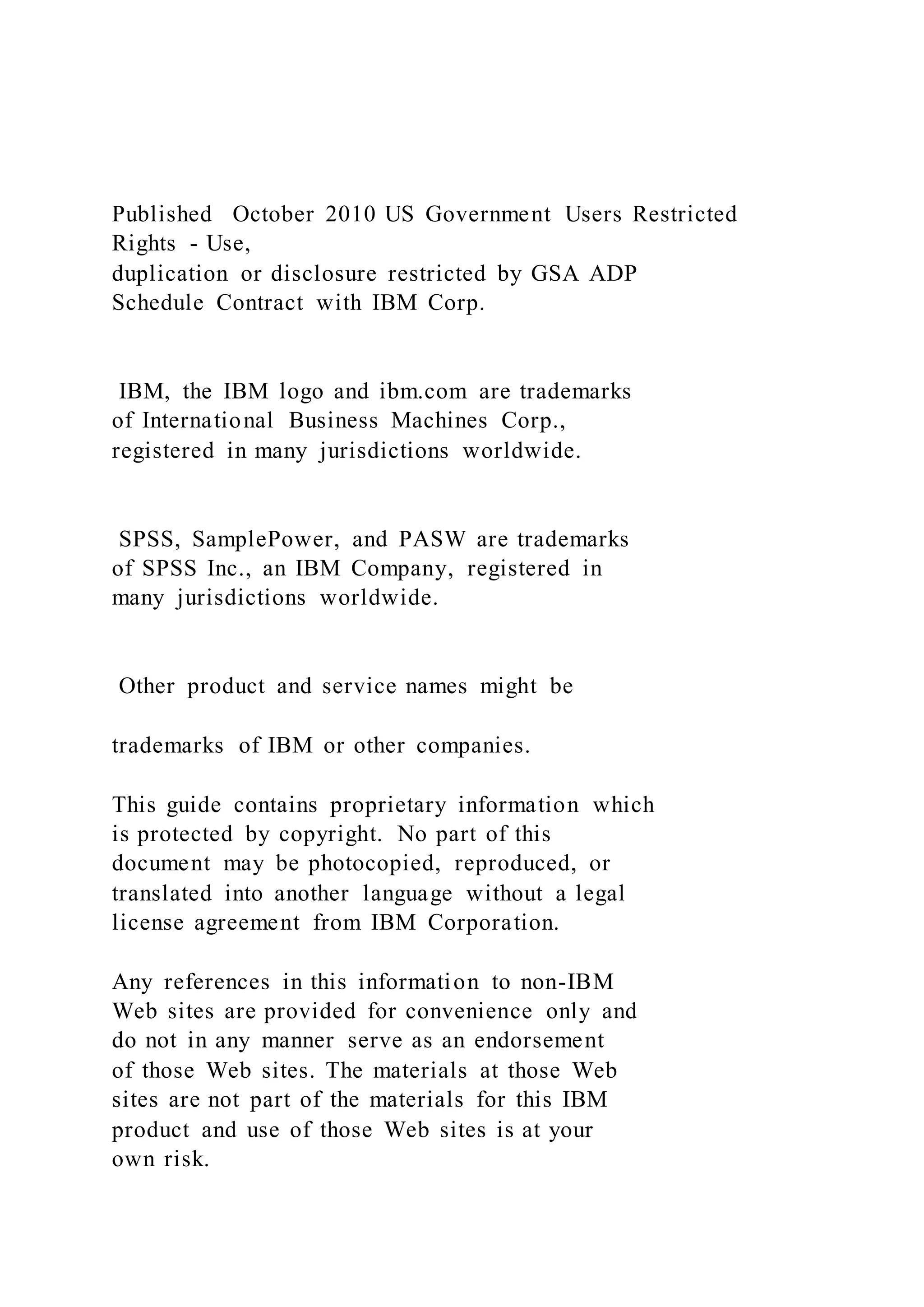
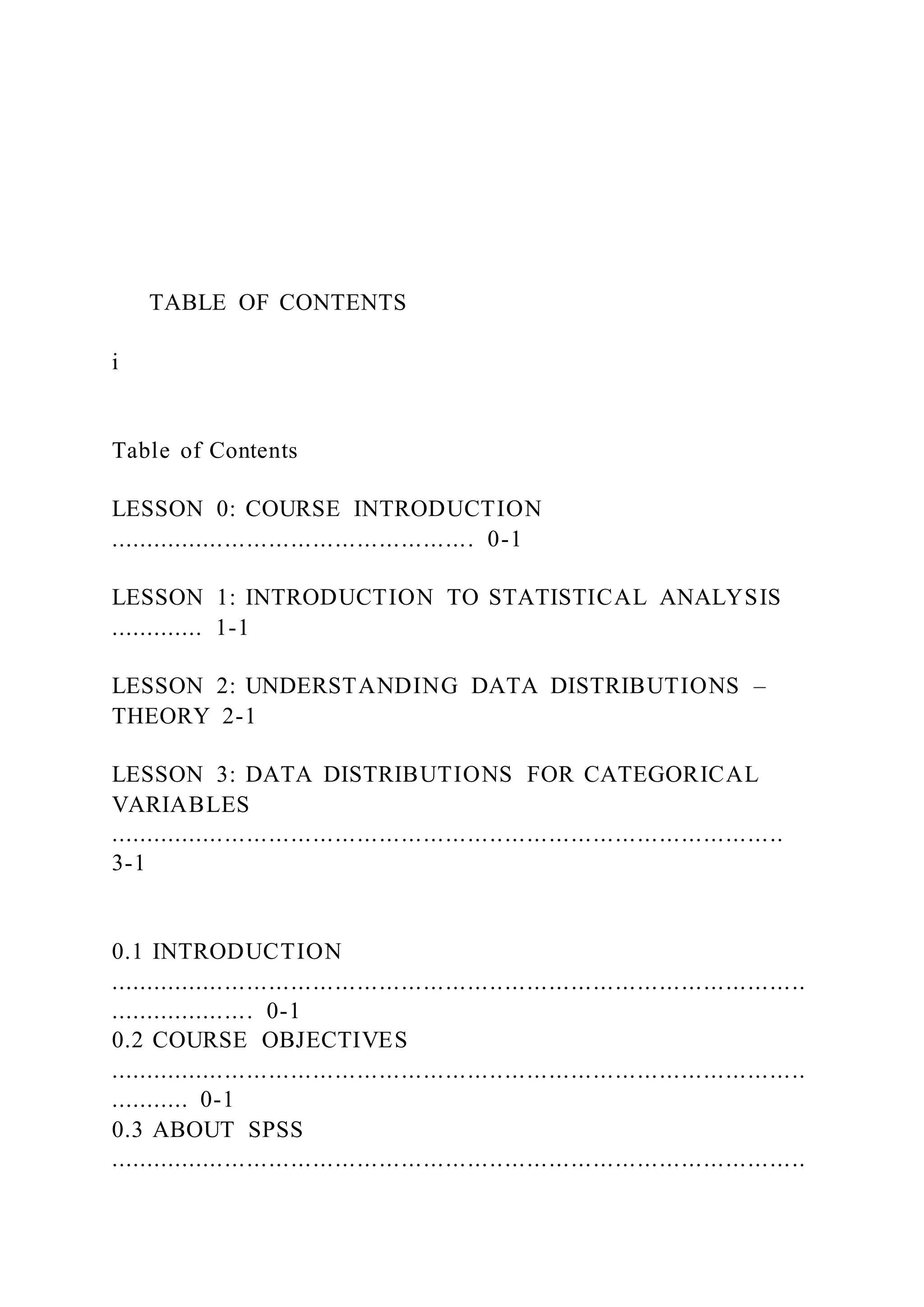
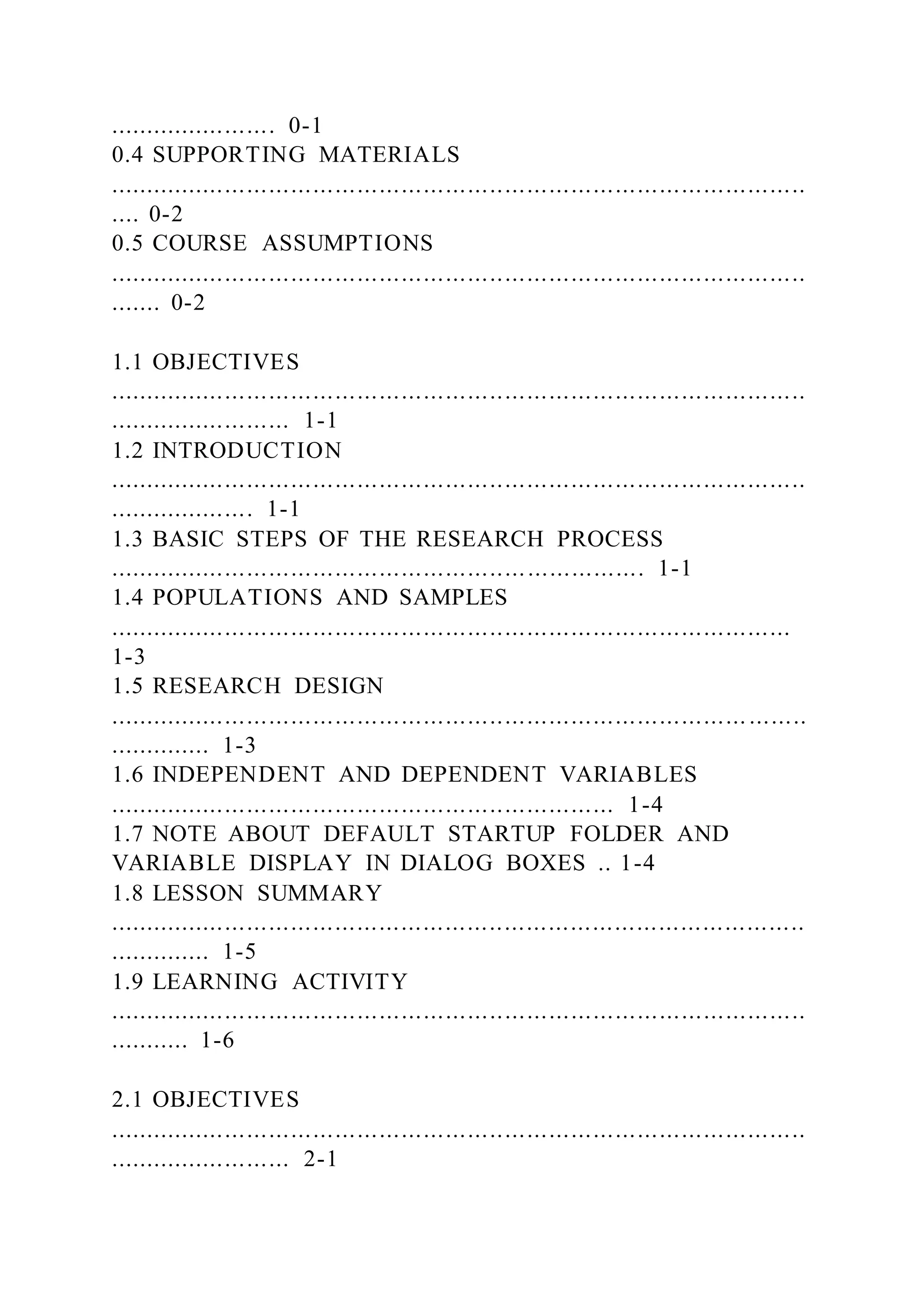
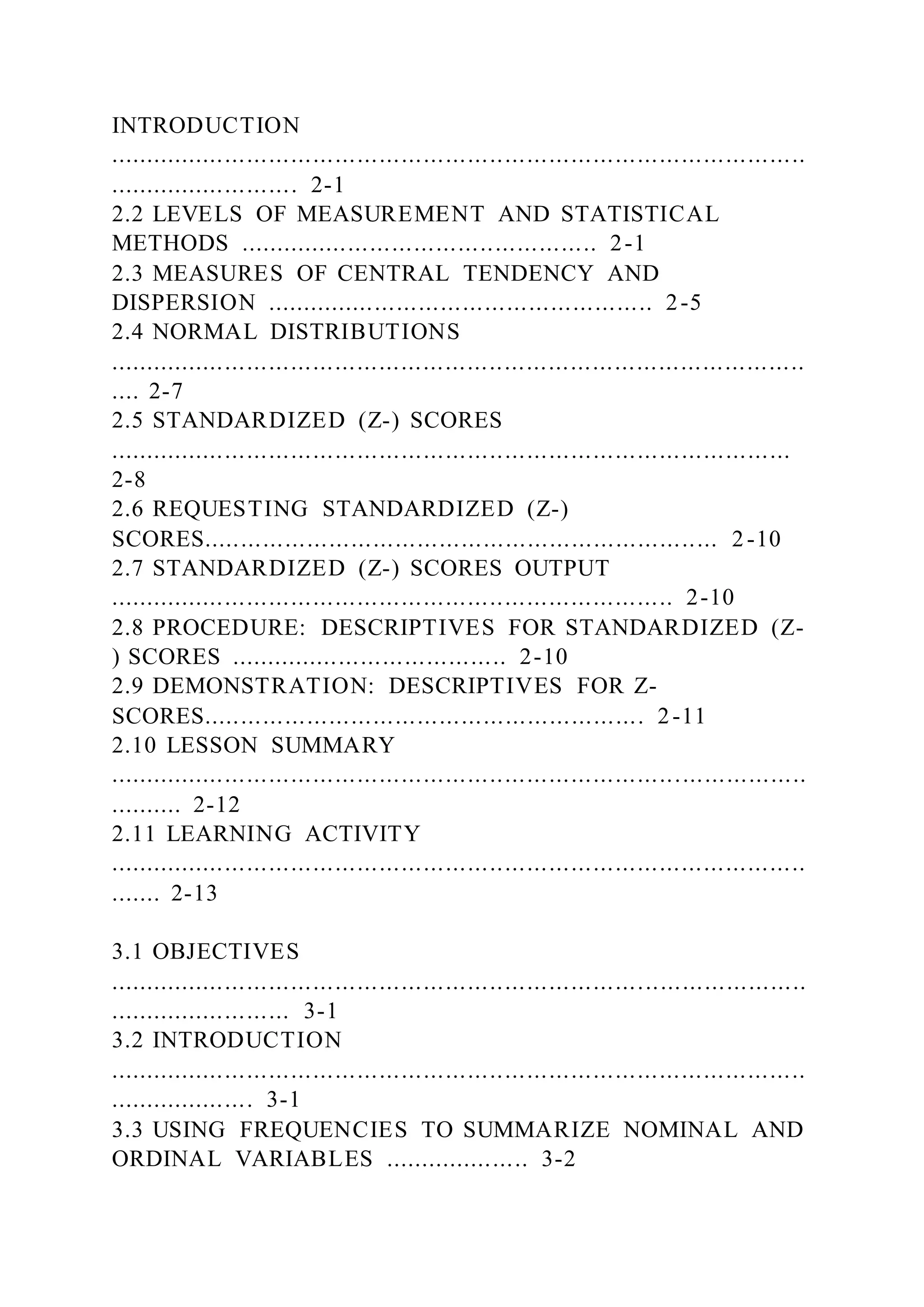

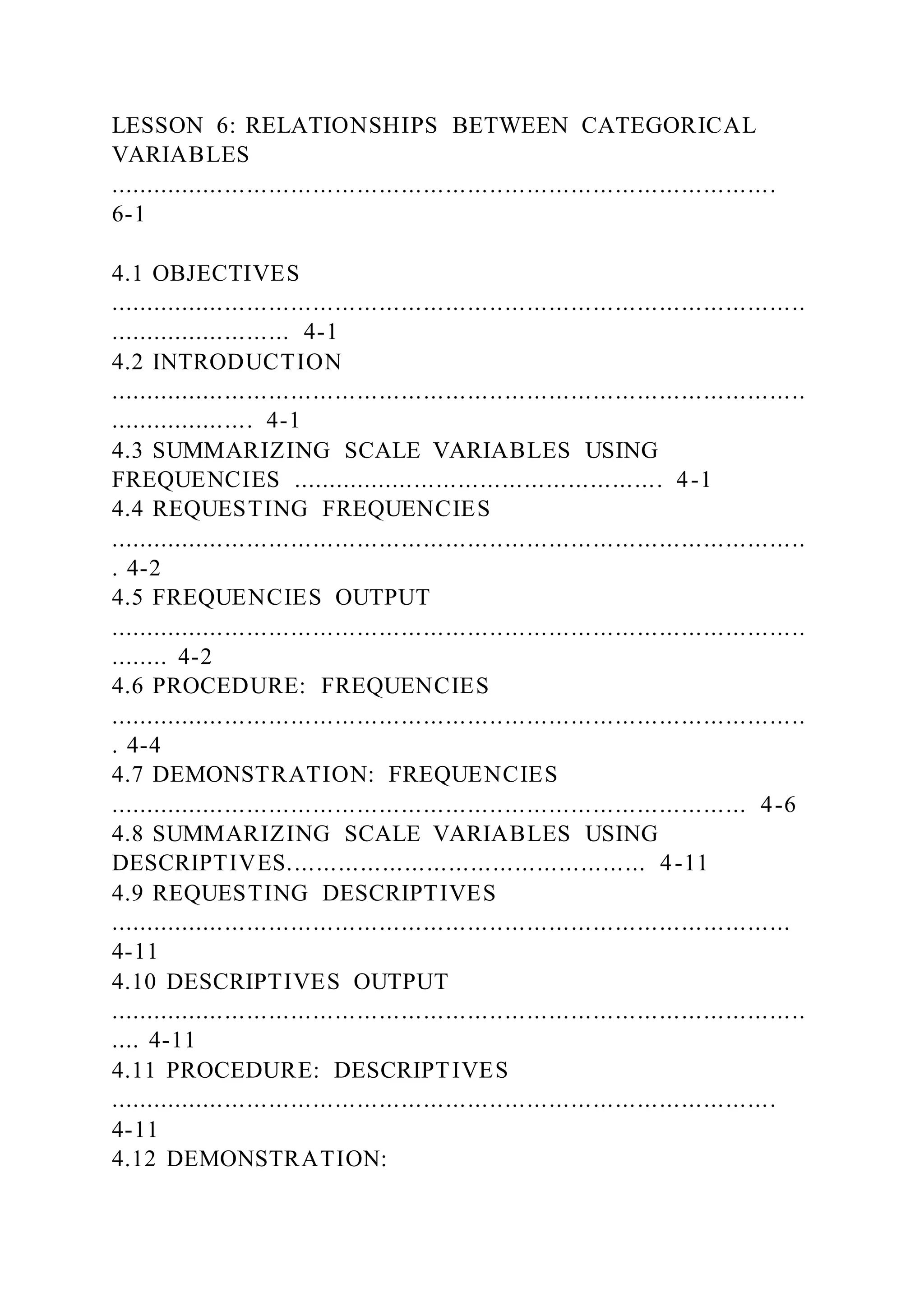

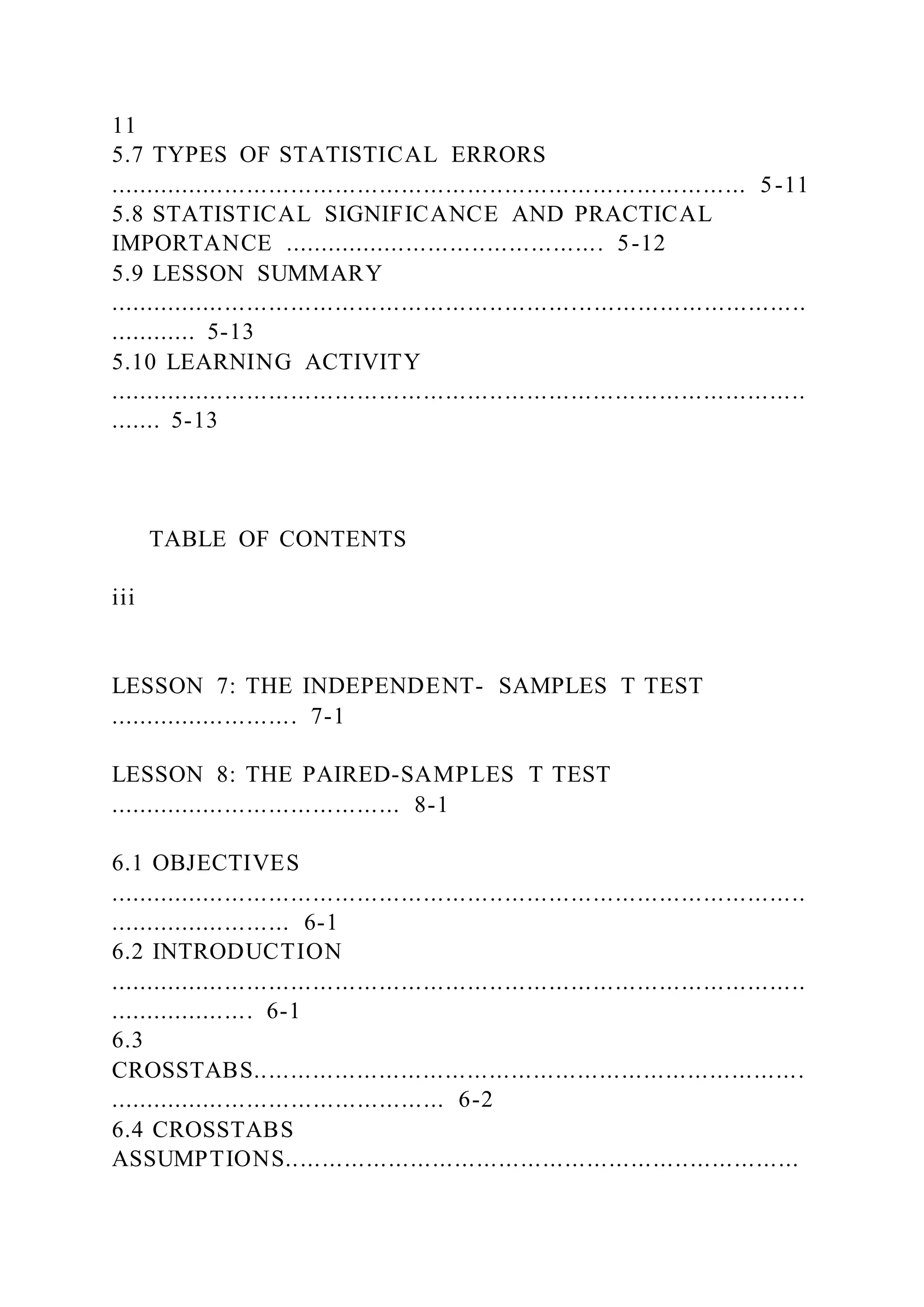
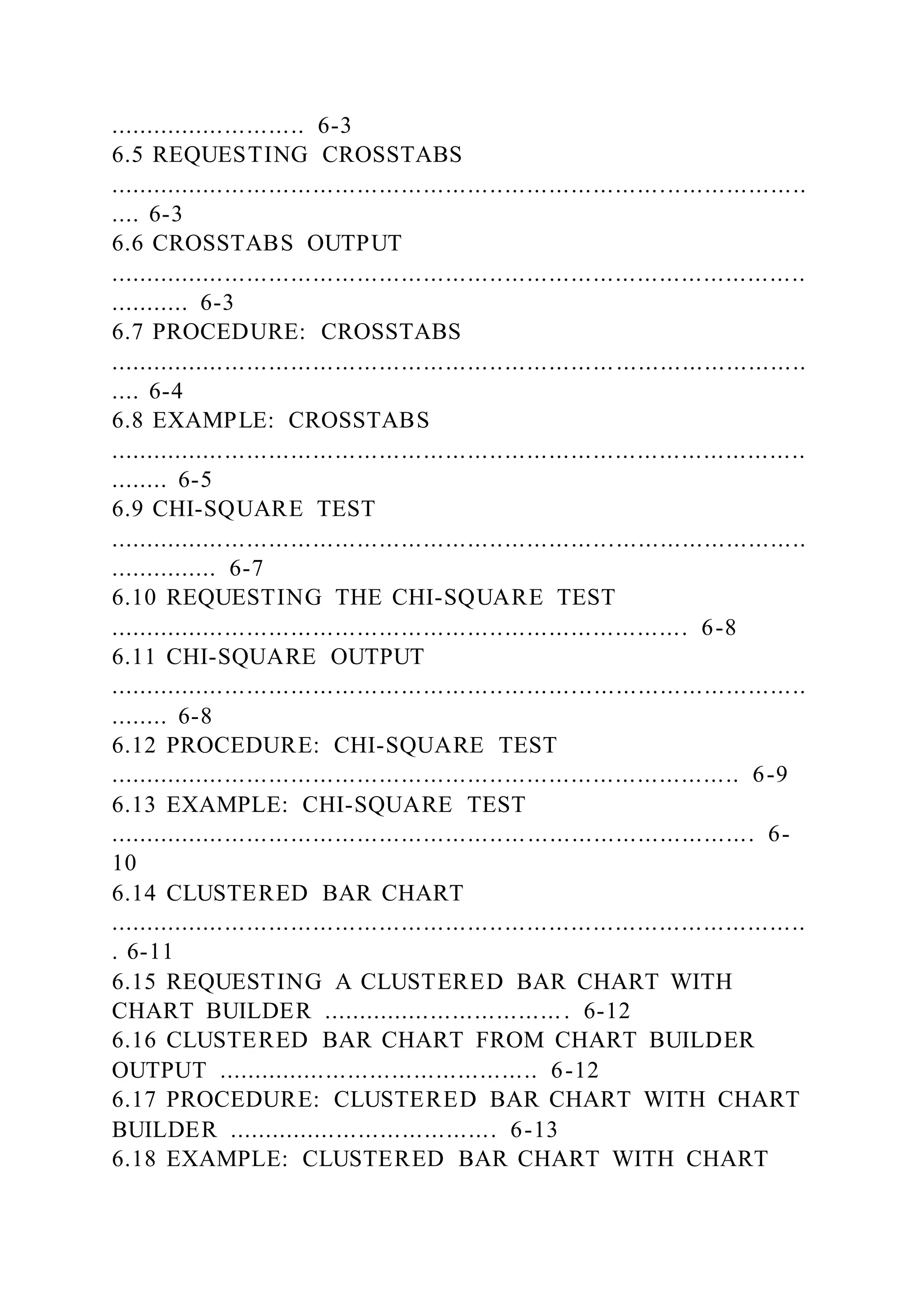
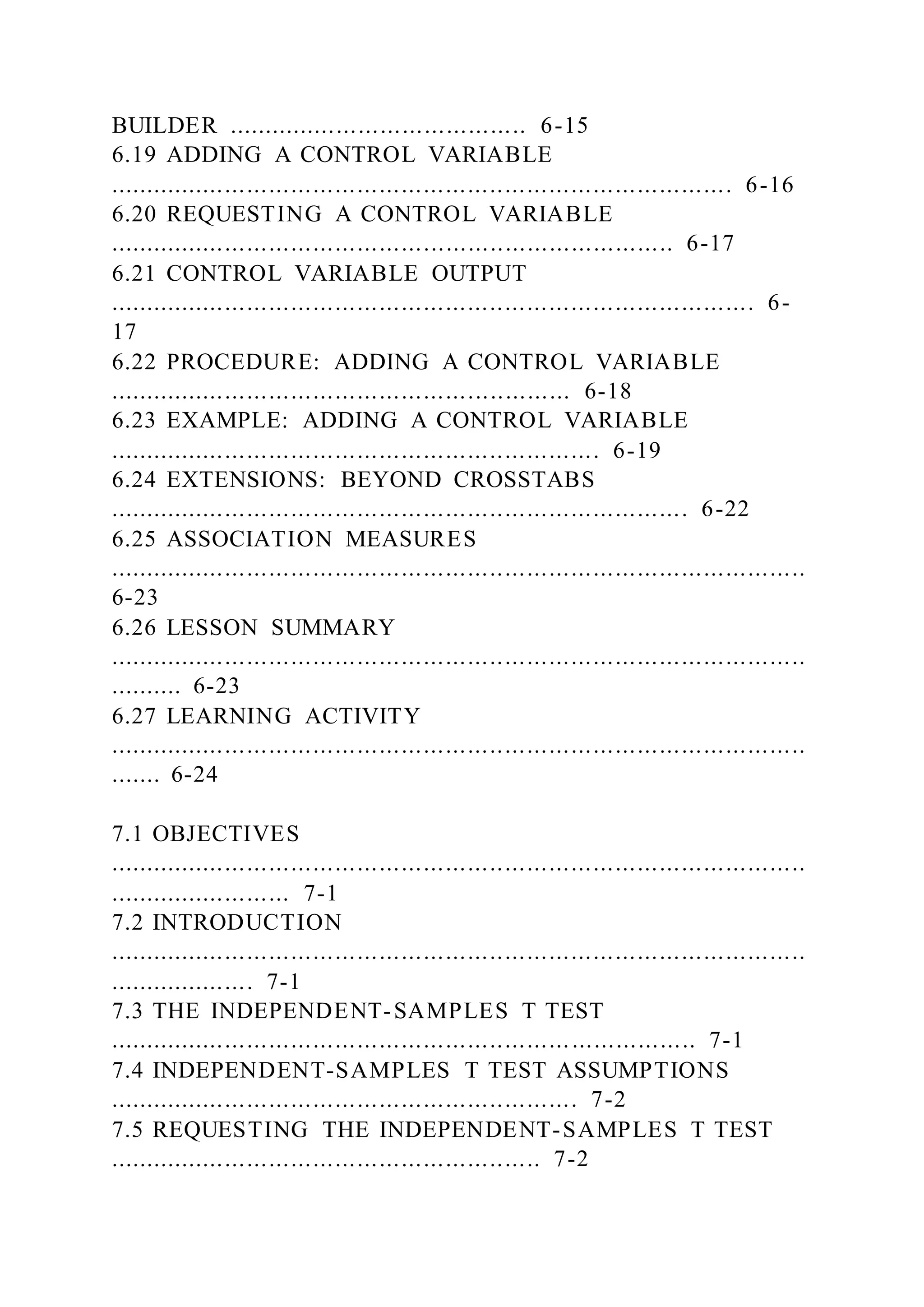


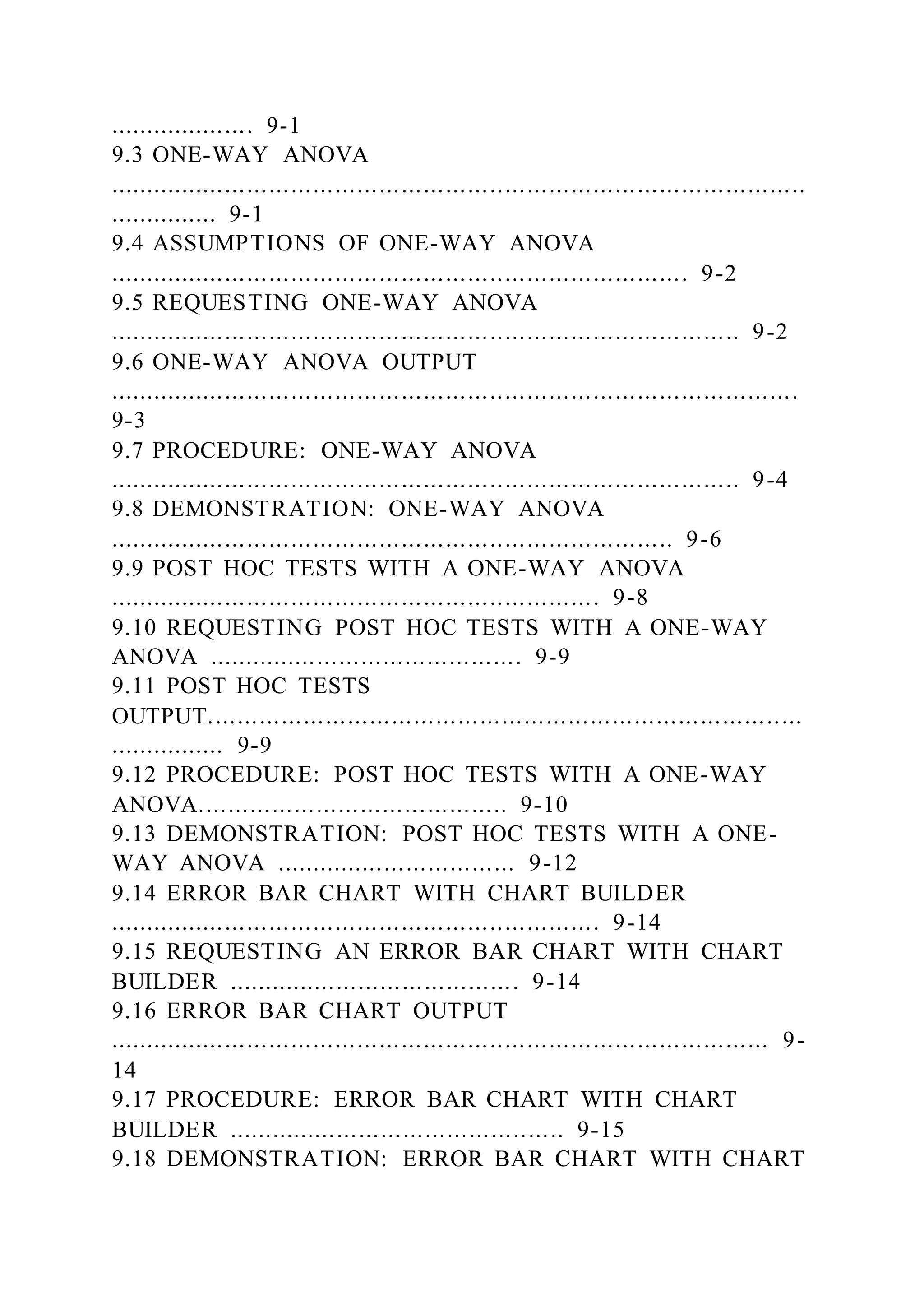

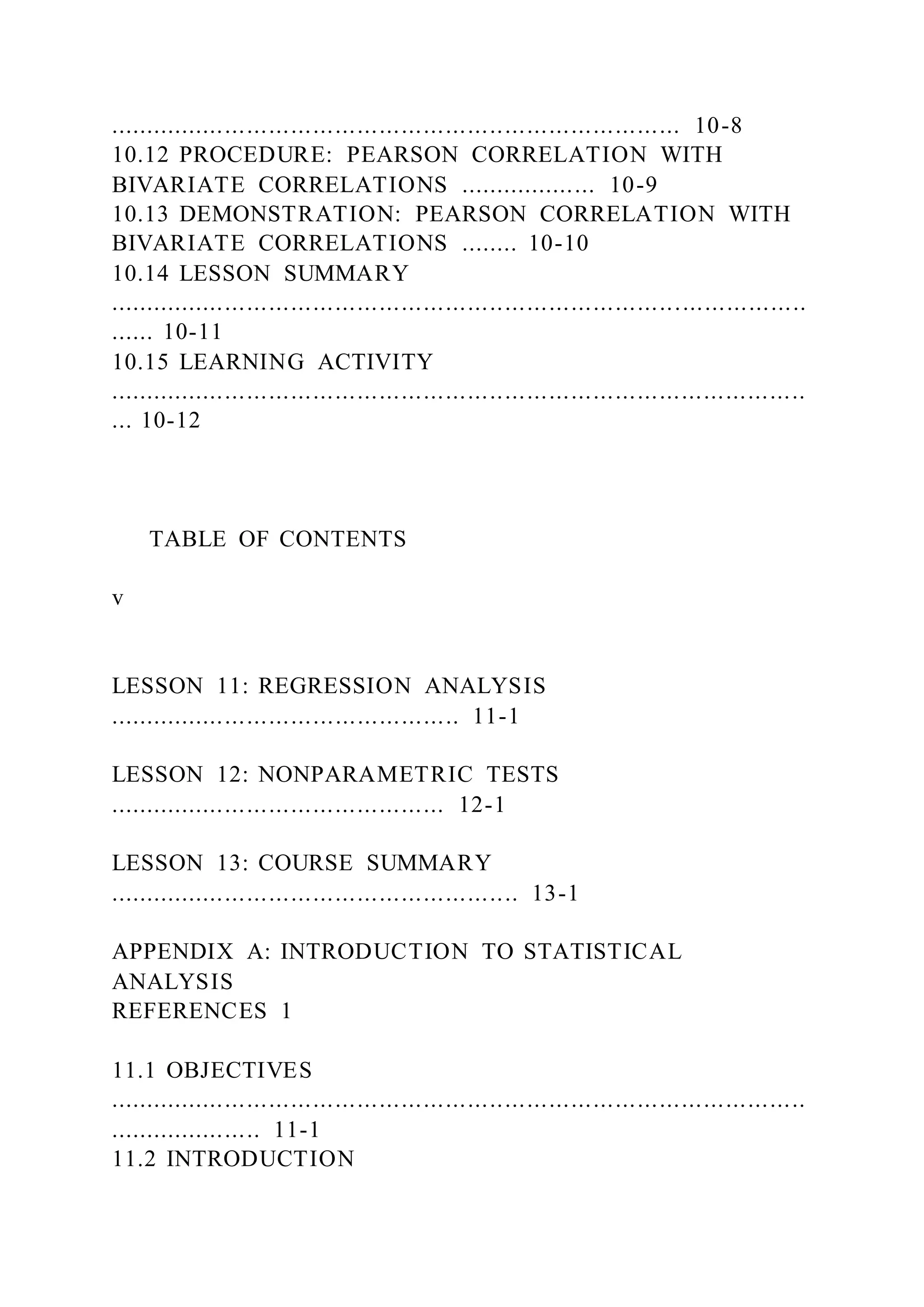
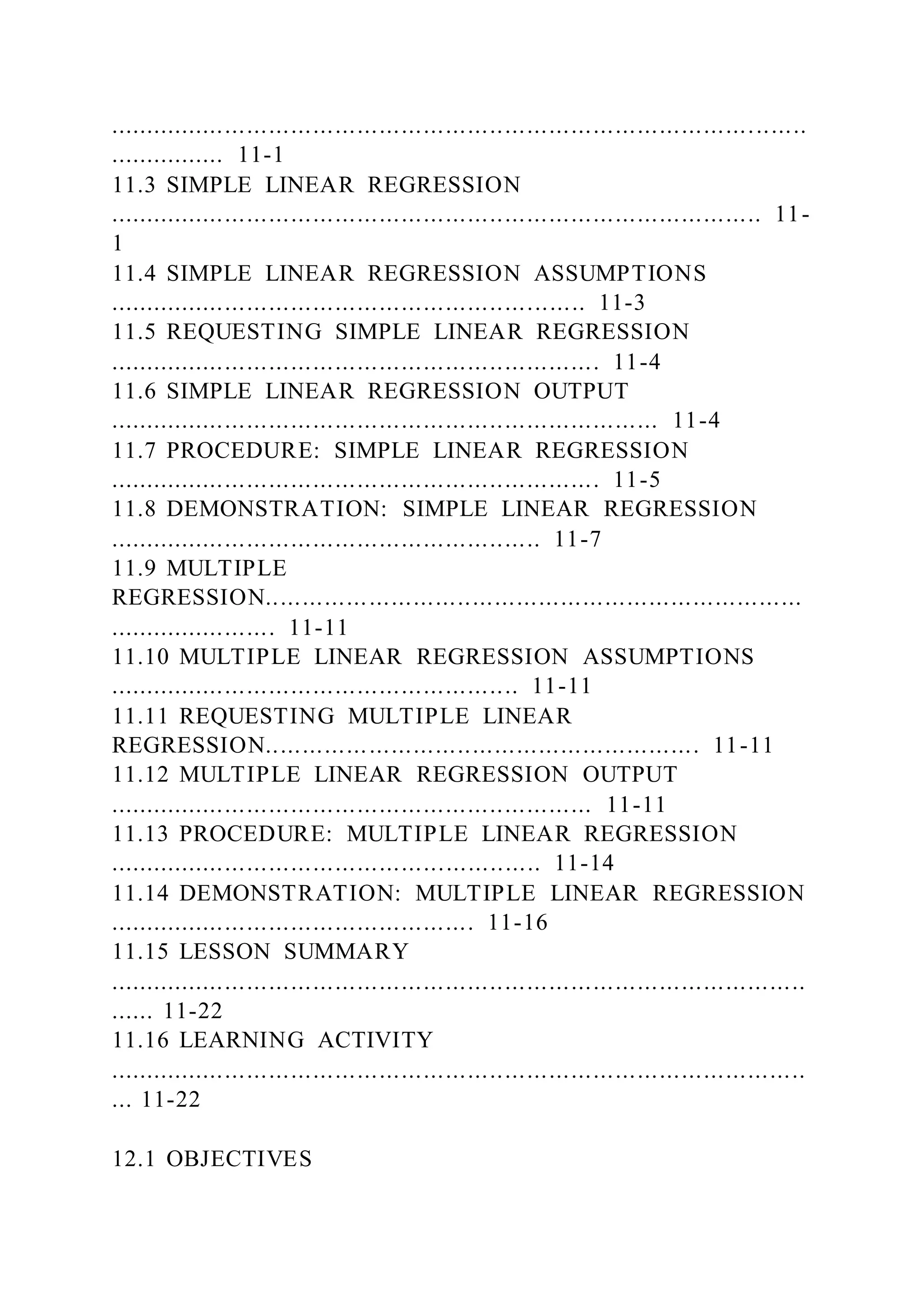
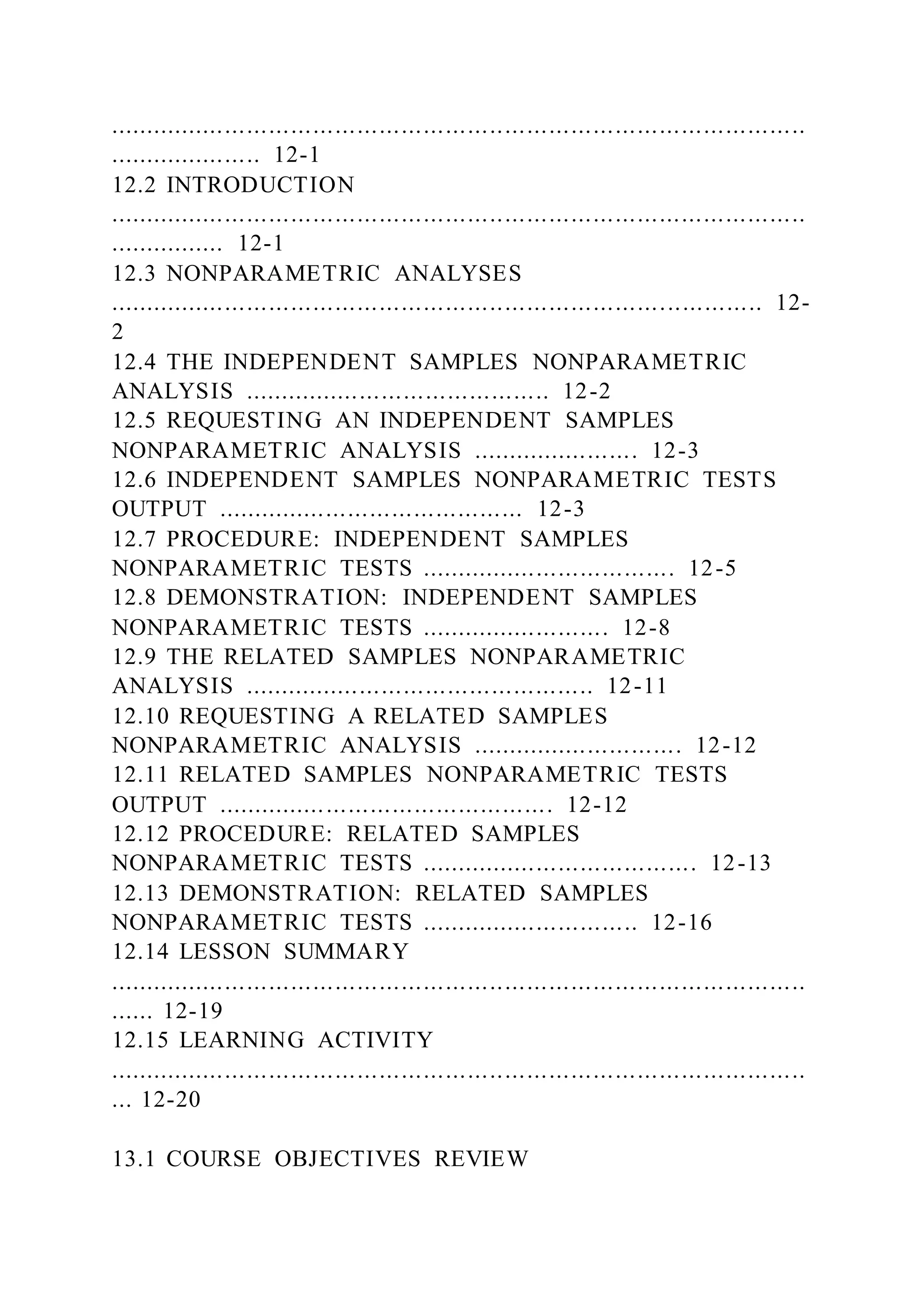
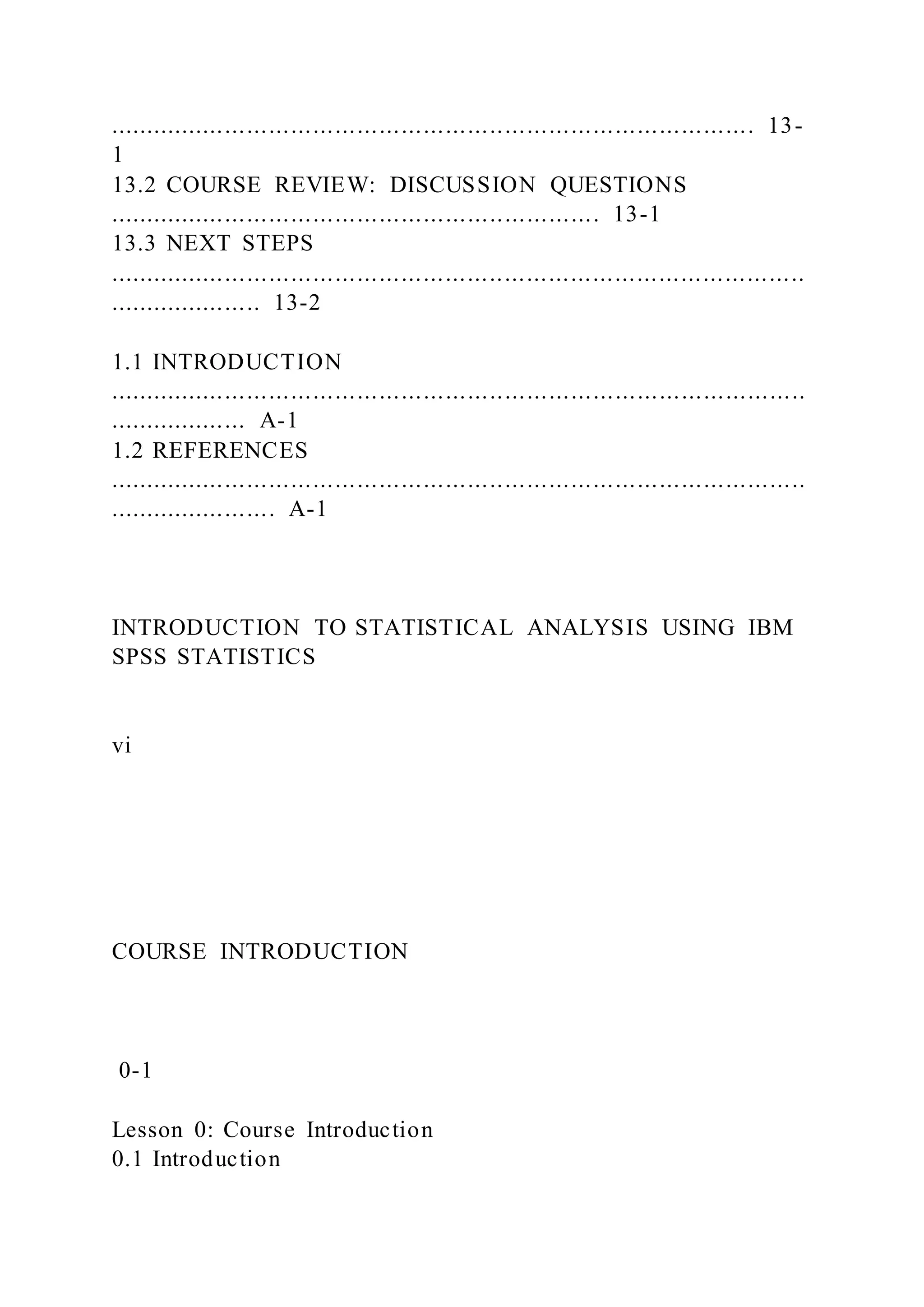
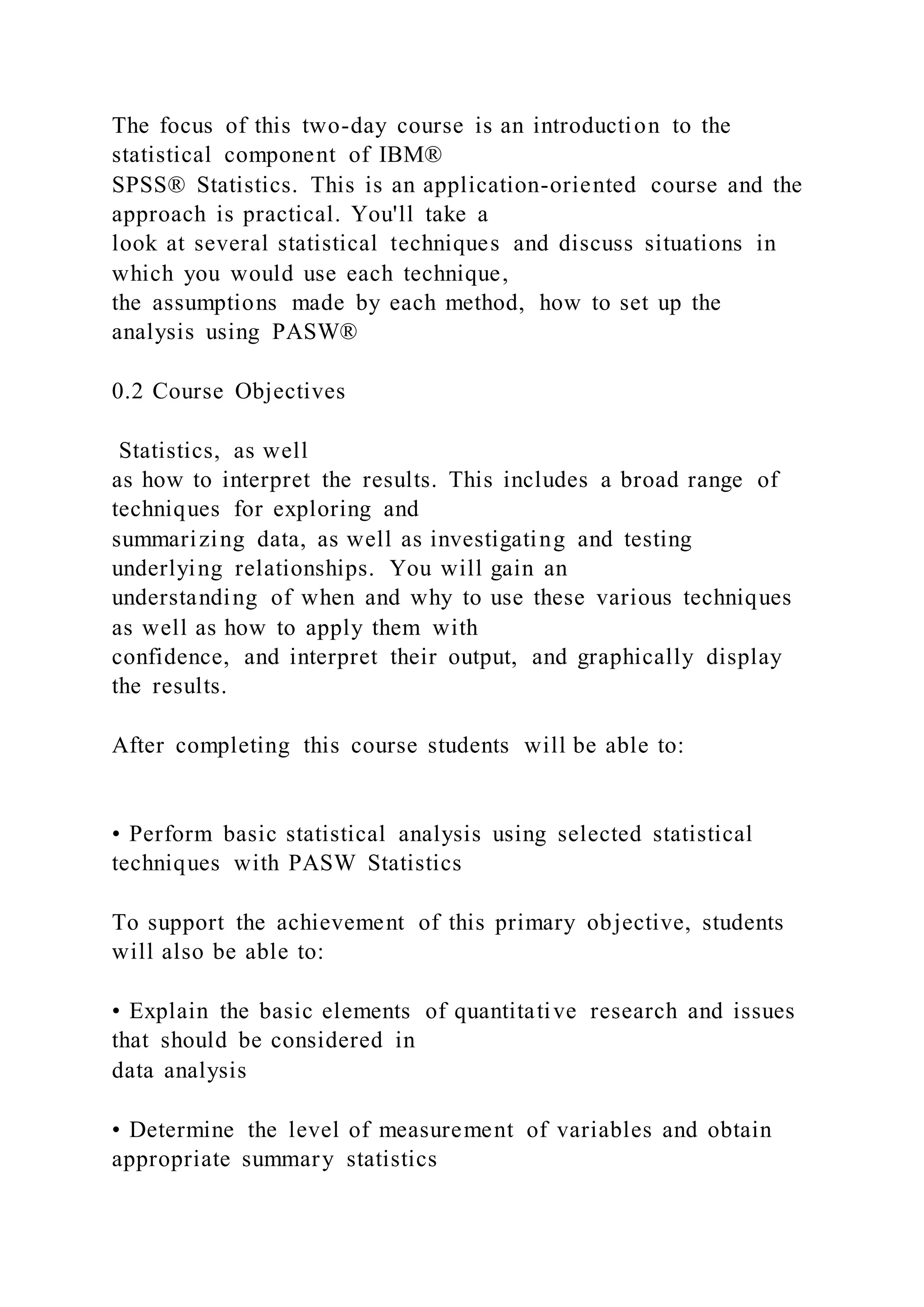
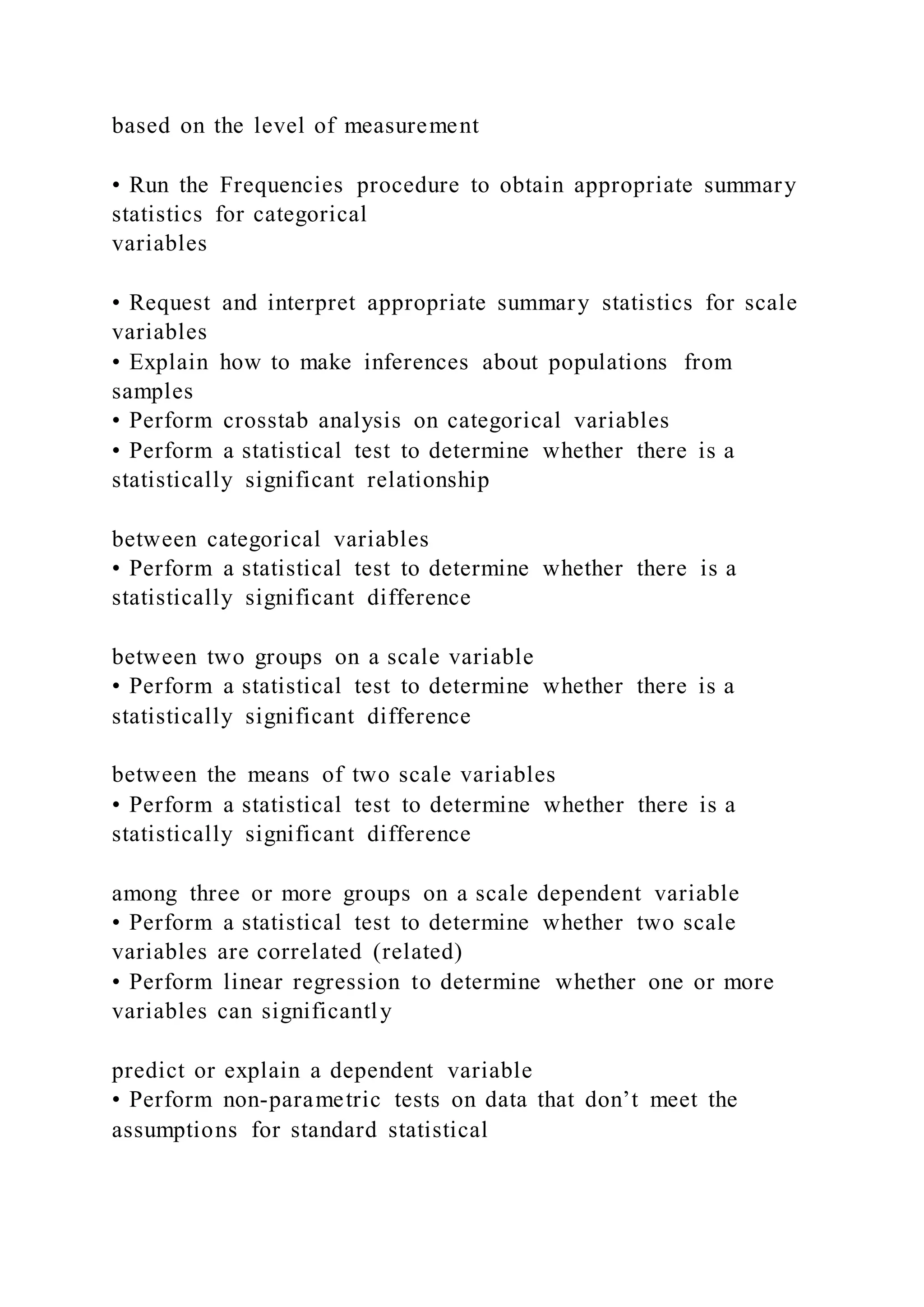

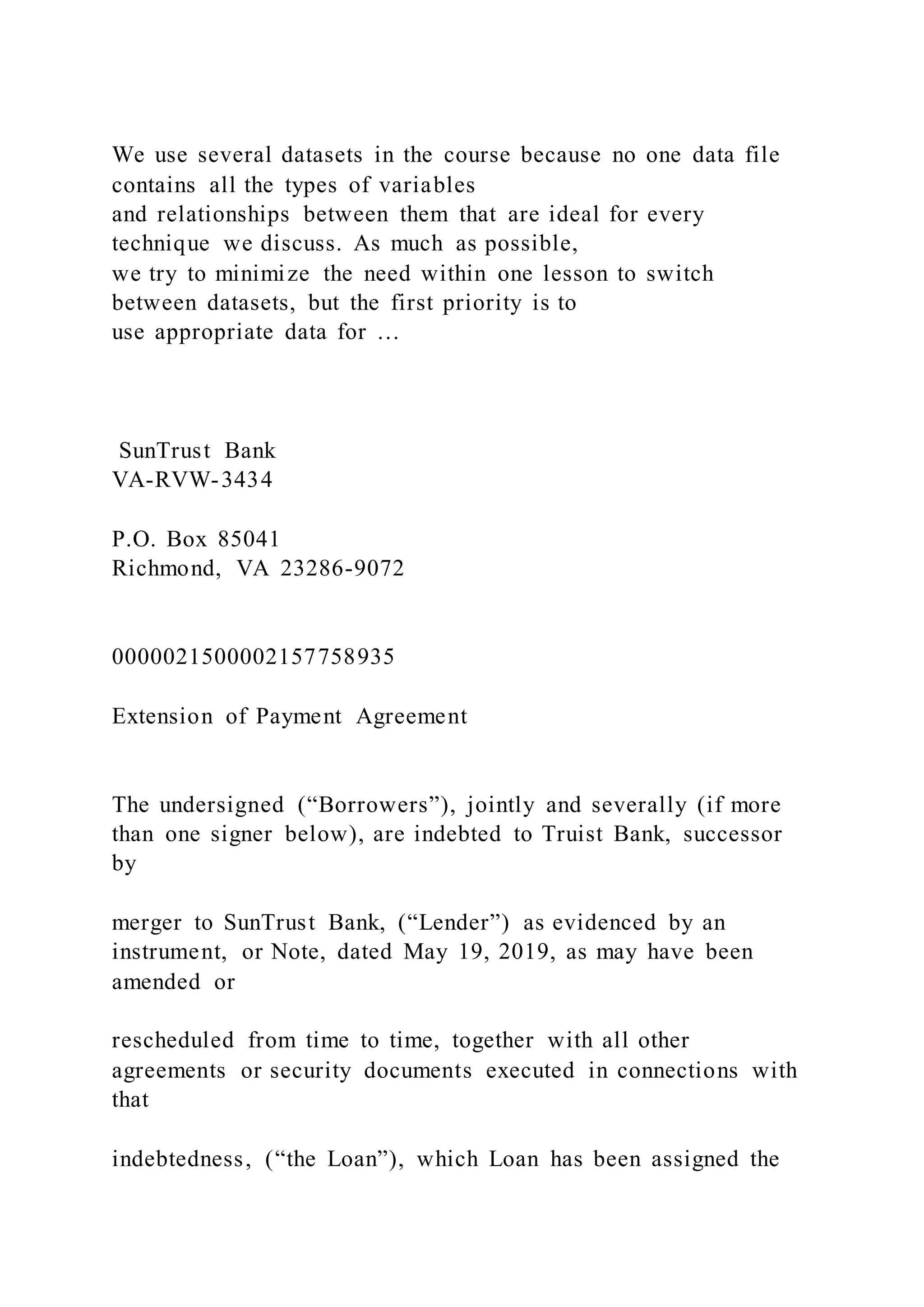
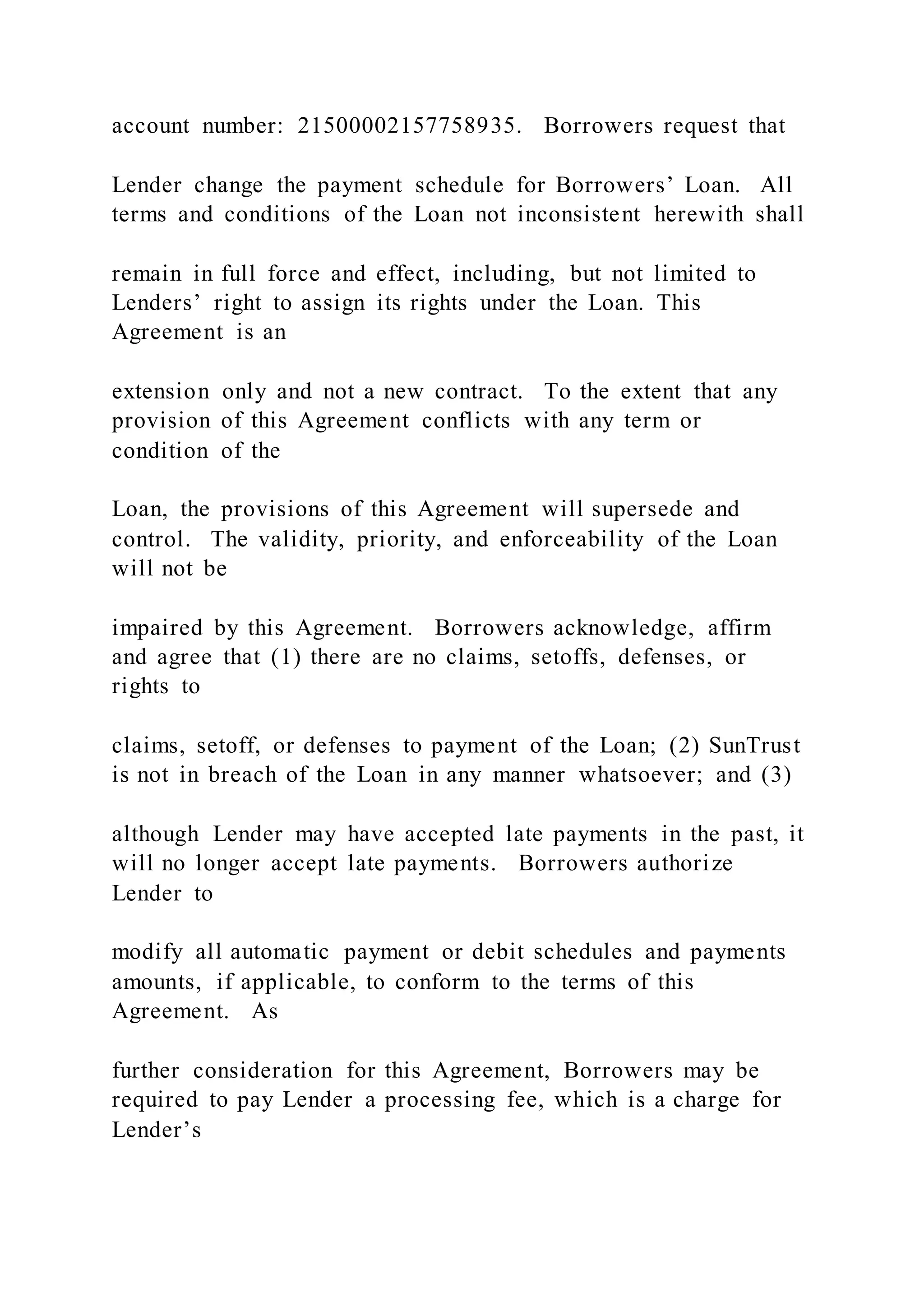
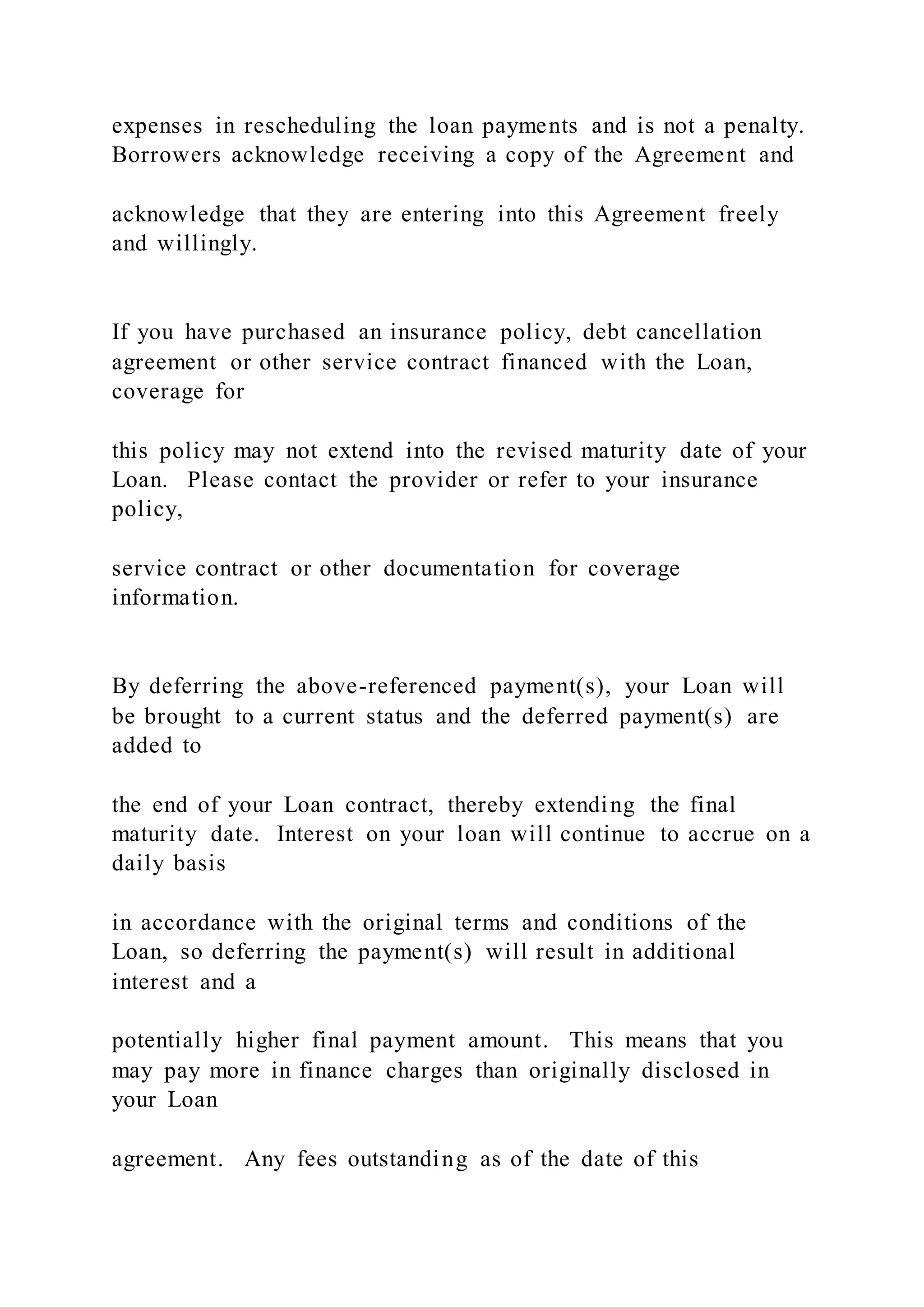
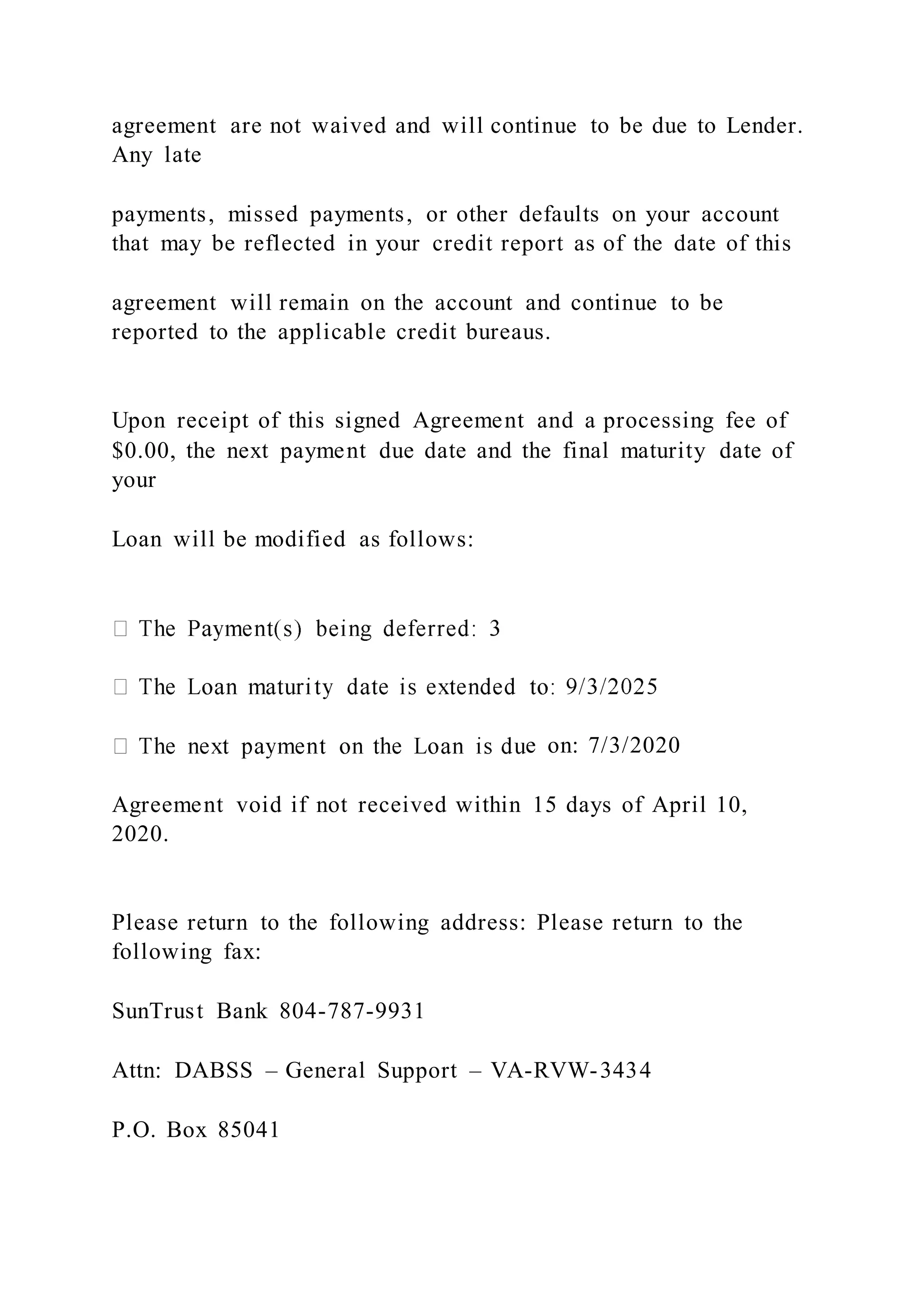

![reserved.
IMPORTANT FEDERAL DISCLOSURES
(SEE NEXT PAGE FOR SELECTED STATE
DISCLOSURES)
important financial and legal protections to service
members — including caps on interest rates, stays of certain
legal proceedings, protection from eviction,
and termination of leases without repercussions. Learn more at
www.militaryonesource.mil [search for
“SCRA”].
crisis, or just looking for education classes to
increase your financial knowledge, consider contacting an
accredited nonprofit agency that is a member of
the National Foundation for Credit Counseling (NFCC). To
locate an NFCC Member Agency in your area,
call 800-388-2227.
charges, and other that may vary from day to day, the
amount due on the day you pay may be greater. Hence, if you](https://image.slidesharecdn.com/introductiontostatisticalanalysisusingibmspss-221003015243-ab0a44e3/75/Introduction-to-Statistical-Analysis-Using-IBM-SPSS-28-2048.jpg)
